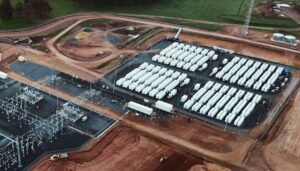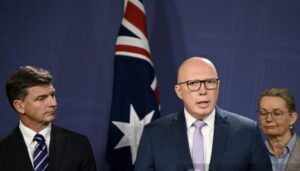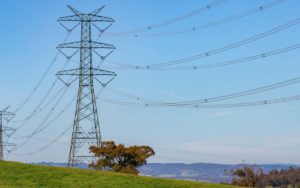Beware of people bearing gifts, the old saying goes. And beware of politicians bearing promises of a reduction in electricity bills.
The Federal Government last Friday announced the early closure of its Solar Credits scheme which offered a multiplier in the number of renewable energy certificate issued for the output of a rooftop solar PV systems.
It justified this on the basis that it would save Australian electricity consumers between $80 and $100 million in 2013. But this amounts to be just $10 a year, or 20c per household a week, in an average bill of more than $2,000. If the government were really serious about reducing the impact on electricity bills from the scheme, there were numerous other options.
It could, for instance, be pushing for a change in the rules that allow utilities to pass on a fixed $40 price for each certificate, rather than the much lower market price. (Only the ACT pricing regulator has reduced the pass-through cost, although NSW’s IPART is considering it). Such a move would save perhaps one quarter of the estimated $1.2 billion cost of the scheme this year. Even that amounts to less than 2 per cent of electricity bills – and is forecast to decline to around 0.8 per cent in coming years.
So what is the government up to? The decision announced by Climate Change Minister Greg Combet on Friday took the solar industry by surprise. It’s not so much the financial impact of the decision that worries the industry – it will reduce the savings of a 1.5kW system by around $700, but this was going to happen in July anyway. As Nigel Morris pointed out in his blog, the biggest impact is to effectively cancel Christmas for solar installers, because they will be too busy trying to cope with the last minute rush.
What really worries the solar industry is the form guide of the decision, its timing– coming in the middle of a review of the Renewable Energy Target by the Climate Change Authority – and its arbitrary nature.
The solar industry has become used to governments lurching from one extreme to another – as has happened as a succession of Labor state governments had their overly generous solar feed in tariffs substituted abruptly by overly-miserly ones imposed by the Conservative governments.
The solar industry hopes that the federal Government can show more moderation, and more discipline. The Clean Energy Council and the Alternative Technology Association declared, perhaps optimistically, that this means that no more changes would be required. The Australian Solar Council described it at as a “disgrace”, precisely because it feared that it would not be the last. There is deep concern in all three groups about the CCA’s draft recommendation that credits for rooftop solar could be further adjusted to less than one certificate for each megawatt hour produced – effectively reducing the value of renewable energy produced at home.
The Australian solar industry should be worried because residential rooftop solar market – despite its popularity – remains the most exposed to government whim. And governments – both state and federal – are under immense pressure from utilities (some of them state owned) because of what rooftop solar does to their business models.
Much has been made in the debate about the structure of the large scale component of the RET. Having more utility scale renewable plants such as wind farms plays around with the numbers a bit, because of the impact on wholesale prices. It will likely hurt some coal-fired generators, and cause the construction of some gas plants to be delayed. But the reduction in wholesale prices can usually be absorbed because the gen-tailers that dominate the industry pick it up in their retail arm – which is why AGL Energy was so furious when the South Australian pricing regulator ESCOSA dared suggest that the retail prices be adjusted downwards to reflect the fall in wholesale prices.
Rooftop solar PV poses a greater threat to the business models of the utilities because it gets behind the meter. This means that, unlike the boom in air conditioners in recent years, rooftop solar PV reduces demand on the network rather than adds to it. The business models of all generators, distributors and retailers have long been based around the unwavering assumption of growing demand. They are simply not able to deal with with the absence of growth – and for this reason, rooftop solar PV is likely to have an even greater impact on their business models than more wind farms.
And it’s not just the residential market that threatens their returns, but the commercial market for rooftop solar PV. Some energy hungry manufacturers and others are talking about installing 1MW to 2MW solar PV systems on their rooftops, behind the meter, further reducing demand on the National Electricity Market. That’s a mighty chunk out of a regional manager’s budget if that is allowed to go through.
The energy utilities will have to cope with this paradigm shift at some point in time, but right now they are just not prepared to do so. So they are using all sorts of tactics to delay the rollout of rooftop solar – proposing higher fixed charges, refusing connections, and lobbying intensely for a reduction in rooftop solar incentives.
Like Combet, the utilities have been professing a concern about the impact of solar PV incentives on electricity customers. It’s a shame, though, that the utilities didn’t express the same concern about their customers bill when they were all adding air conditioners. As the Energy White Paper pointed out, each 1.5kW air conditioner adds $7,000 to the cost of network. A home installing three such machines requires$20,000 of added infrastructure – paid for by other users, including those who don’t have air-con. It was estimated in the Energy White Paper that customers who don’t have air conditioners are paying $400 a year to subsidise the use of air-conditioners by the majority. See story, Why you are paying $10/hr to run your neighbour’s air-con.
That’s the principal concern about Combet’s decision. The 20c saving per household doesn’t matter a lot, and neither in the long term does the fact that a $700 saving on the purchase of household systems in removed six months earlier than planned. What should concern the industry is the ability of utilities to force more pressure on the governments in the future. Hopefully Combet knows what he doing, and which team he is playing for.










